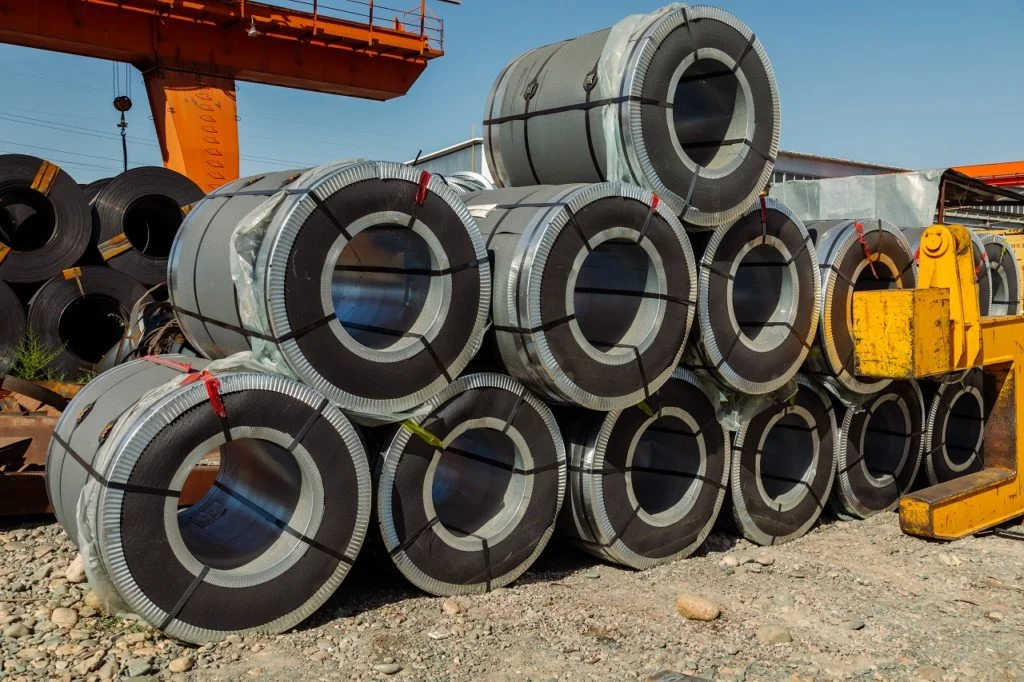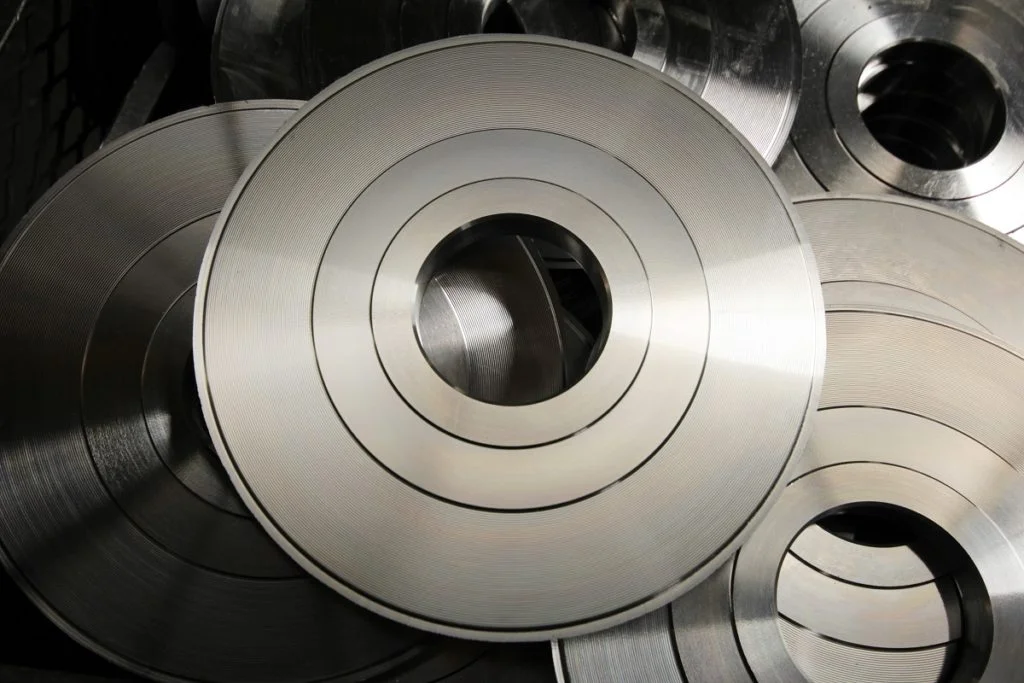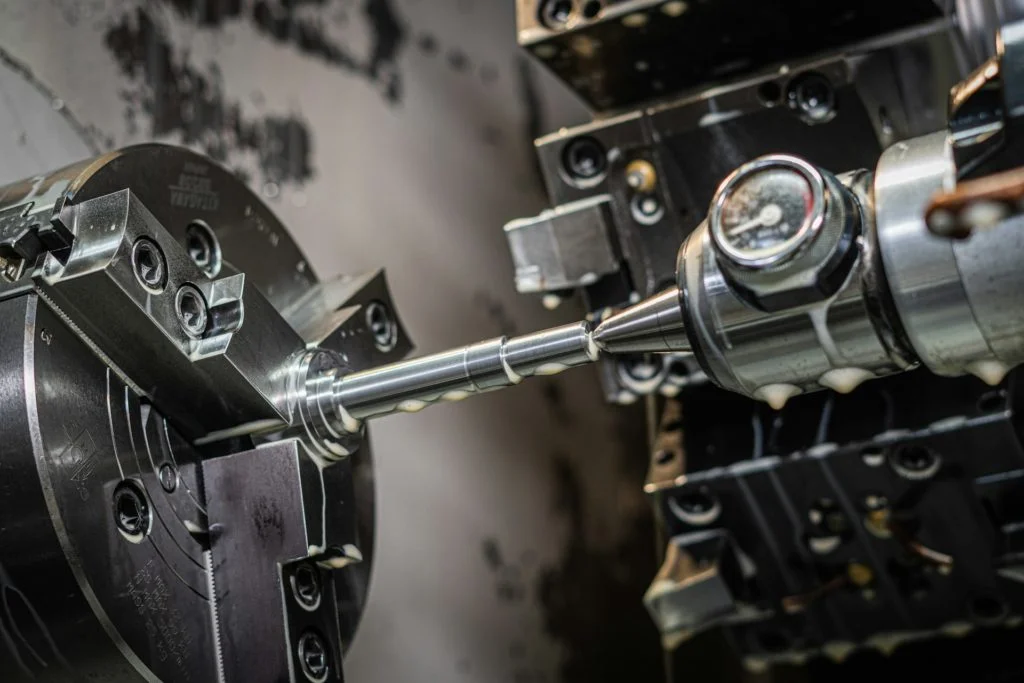Efficient loading is crucial for transportation as it directly impacts the cost-effectiveness and timely delivery of goods. Due to their weight and size, efficient loading becomes even more significant for steel coils. Steel coils are large, heavy rolls of steel used in various industries, such as automotive, construction, and manufacturing. They are essential in producing many products, including cars, appliances, and infrastructure.
The transportation of steel coils requires careful planning and execution to ensure they arrive at their destination in optimal condition. Any mishandling or improper loading can damage the coils, leading to costly repairs or replacements. Therefore, understanding the importance of efficient loading is essential for companies involved in transporting steel coils.
Key Takeaways
- Efficient loading of steel coils is crucial for safe and cost-effective transportation.
- Optimal transportation requires careful consideration of factors such as weight distribution and trailer type.
- Factors affecting loading include coil size, weight, shape, and environmental conditions.
- Different loading methods, such as eye-to-sky and eye-to-wall, have their own advantages and disadvantages.
- Efficient loading can lead to benefits such as reduced transportation costs and improved customer satisfaction.
Understanding the Importance of Optimal Transportation
Transportation plays a crucial role in maintaining the quality of steel coils. How the coils are loaded onto trailers or containers can impact their structural integrity. Improper loading can cause the coils to shift during transit, leading to deformation or damage. This can result in rejected or unusable coils upon arrival, causing delays and additional costs for the supplier and the customer.
Timely delivery is another critical aspect of transportation regarding steel coils. Many industries rely on a just-in-time delivery system, where components are delivered precisely when needed for production. Any delay in delivery can disrupt the entire supply chain and lead to production delays or even shutdowns. Therefore, efficient loading and transportation are essential to ensure that steel coils reach their destination on time.
Cost-effectiveness is also a significant factor in transportation. Efficient loading allows maximum trailer space utilisation, reducing required trips and minimising transportation costs. Additionally, proper loading techniques can help prevent damage to the coils, reducing the need for repairs or replacements and saving money in the long run.
Factors Affecting the Loading of Steel Coils
Several factors must be considered when loading steel coils to ensure efficient transportation. The coils’ weight, size, and shape are crucial factors that determine how they should be loaded. Steel coils can weigh several tons and come in various sizes and shapes, such as round or rectangular. These factors affect the stability and balance of the load, as well as the equipment and methods used for loading.
The weight of the coils is a critical factor in determining the load capacity of trailers or containers. Overloading can lead to structural damage to the vehicle or even accidents on the road. Therefore, it is essential to accurately calculate the weight of the coils and ensure that it does not exceed the load capacity.
The size and shape of the coils also impact how they should be loaded. Round coils, for example, require different loading methods than rectangular coils. The shape affects how the coils can be stacked and secured to prevent shifting during transit. Considering these factors when planning the loading process is crucial to ensure the coils are properly secured and balanced.
Types of Loading Methods for Steel Coils
| Method | Description | Advantages | Disadvantages |
|---|---|---|---|
| Eye-to-Sky | Coils are loaded with the eye facing upwards | Easy to load and unload, reduces damage to the coil surface | Requires more space, less efficient use of container space |
| Eye-to-Wall | Coils are loaded with the eye facing the container wall | Efficient use of container space reduces the risk of damage to the coil surface | Difficult to load and unload, requires special equipment |
| Cradle-to-Grave | Coils are loaded horizontally with a cradle support | Efficient use of container space reduces the risk of damage to the coil surface | Requires special equipment, less stable during transportation |
| Double-Row | Coils are loaded in two rows, with the eye facing the centre of the container | Efficient use of container space reduces the risk of damage to the coil surface | Requires special equipment, less stable during transportation |
Steel coils are loaded using different methods depending on their size, shape, and transportation requirements. Two standard methods are eye-to-sky and eye-to-wall loading.
Eye-to-sky loading involves placing the coil on its side with the eye (centre) facing upwards. This method allows for easy loading and unloading using overhead cranes or forklifts. It is suitable for round coils as they can easily roll onto their sides. However, eye-to-sky loading may not be suitable for rectangular coils as they may not have a stable base when placed on their sides.
Eye-to-wall loading involves placing the coil with its eye against a wall or bulkhead. This method provides stability and prevents shifting during transit. When placed vertically, it is commonly used for rectangular coils with a stable base. Eye-to-wall loading requires proper bracing and securing to ensure the coils do not lean or fall during transportation.
Both loading methods have pros and cons. Eye-to-sky loading allows easy loading and unloading, but it may not be suitable for all coil shapes. Eye-to-wall loading provides stability but requires proper bracing and securing. The choice of loading method depends on the specific transportation requirements and the characteristics of the steel coils.
Benefits of Efficient Loading for Transportation
Efficient loading of steel coils offers several benefits for transportation. Firstly, it reduces transportation costs by maximizing trailer space utilization. Properly loaded coils take up less space and allow more coils to be transported in a single trip. This reduces the required trips, saves fuel costs, and minimises carbon emissions.
Efficient loading also improves safety during transportation. Properly secured coils are less likely to shift or fall during transit, reducing the risk of accidents or injuries. This not only protects the coils but also ensures the safety of other road users.
Furthermore, efficient loading can improve the quality of steel coils. By preventing shifting or deformation during transit, the coils arrive at their destination in optimal condition. This reduces the need for repairs or replacements, saving time and money for both the supplier and the customer.
Safety Measures for Loading and Unloading of Steel Coils

Loading and unloading steel coils require strict adherence to safety guidelines to prevent accidents and injuries. Here are some essential safety measures that should be followed:
- Use proper lifting equipment: Steel coils are heavy and require specialised lifting equipment such as overhead cranes or forklifts. Using improper equipment or attempting manual lifting can lead to accidents or injuries.
- Ensure proper training: Operators involved in loading and unloading should receive proper training on equipment operation, safety procedures, and load-securing techniques. This ensures they know potential hazards and how to handle the coils safely.
- Wear appropriate personal protective equipment (PPE): Operators should wear PPE such as hard hats, safety glasses, gloves, and steel-toed boots to protect themselves from potential hazards.
- Inspect equipment and trailers: Before loading or unloading, it is essential to inspect the equipment and trailers for any damage or defects. This includes checking the condition of straps, chains, and other securing devices.
- Communicate effectively: Clear communication between operators is crucial during the loading and unloading process. Hand signals or radios should be used to ensure everyone knows their roles and responsibilities.
By following these safety measures, companies can minimize the risk of accidents or injuries while loading and unloading steel coils.
Best Practices for Loading Steel Coils onto Trailers

Loading steel coils onto trailers requires careful planning and execution to ensure efficiency and safety. Here are some best practices to follow:
- Use proper equipment: Specialised equipment, such as coil racks or pads, should support and secure the coils during transportation. These devices provide stability and prevent shifting.
- Stack coils properly: Coils should be stacked to ensure stability and balance. The heaviest coils should be placed at the bottom, with lighter coils on top. This prevents top-heavy loads that can lead to instability during transit.
- Secure the coils: Proper securing is crucial to prevent the coils from shifting or falling during transportation. Straps, chains, or other securing devices should hold the coils in place. It is essential to follow the manufacturer’s guidelines for securing methods and load limits.
- Distribute weight evenly: To maintain balance, the coils’ weight should be evenly distributed across the trailer. Uneven weight distribution can lead to instability and increase the risk of accidents.
- Inspect the load: Before departure, the load should be inspected to ensure the coils are properly secured and balanced. Any loose or damaged securing devices should be replaced or repaired.
By following these best practices, companies can ensure efficient and safe loading of steel coils onto trailers.
Choosing the Right Equipment for Efficient Loading
Choosing the right equipment is crucial for efficient loading of steel coils. Several types of equipment are available, each designed for specific coil sizes and transportation requirements.
Coil racks are commonly used for eye-to-sky loading. They provide a stable base for the coils and allow easy loading and unloading using overhead cranes or forklifts. Coil racks come in various sizes and configurations to accommodate different coil sizes and weights.
Coil pads are used for eye-to-wall loading. They provide cushioning and support for the coils, preventing damage during transportation. Coil pads are typically rubber or foam and can be customized to fit specific coil sizes.
Equipment such as straps, chains, or edge protectors may also be required to secure the coils properly. Choosing equipment suitable for the specific coil sizes and transportation requirements is essential to ensure efficient loading.
Pulse Plastics Solutions:
- coilshield® [Injection Moulded]
- Inner Bore Protection [Injection Moulded]
- Double Petal Outer Edge Protection [Extruded]
- Single Petal Outer Edge Protection [Extruded]
- Double Petal Inner Bore Protection [Extruded]
- Single Petal Inner Bore Protection [Extruded]
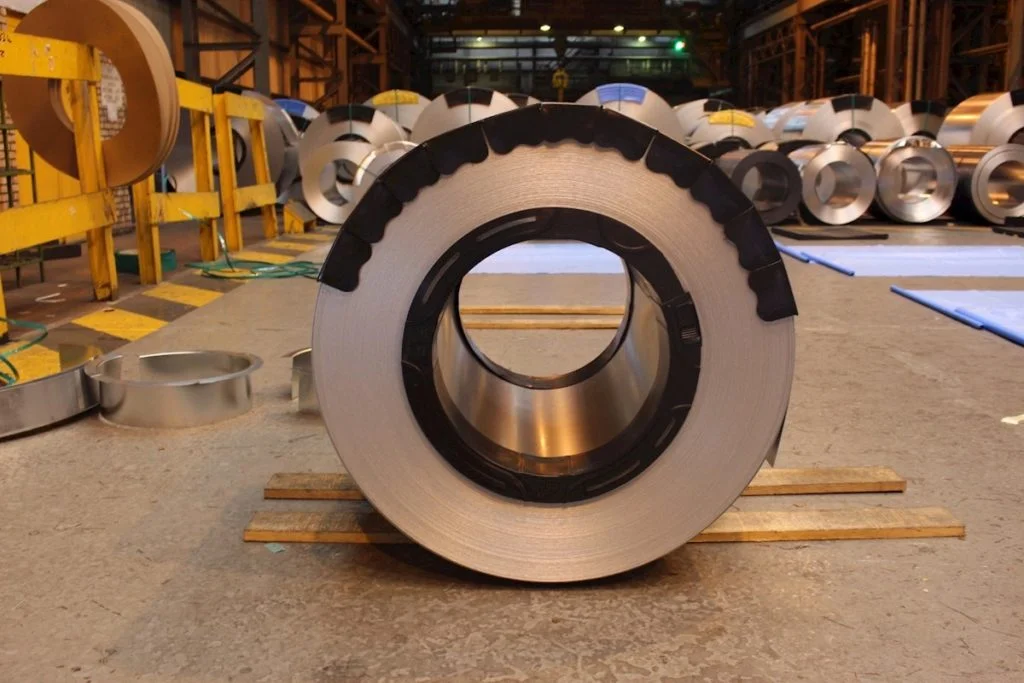
Pulse Plastics equipment offers safe and efficient loading of steel coils.
Introducing coilshield® – what is it, and what makes it so unique?
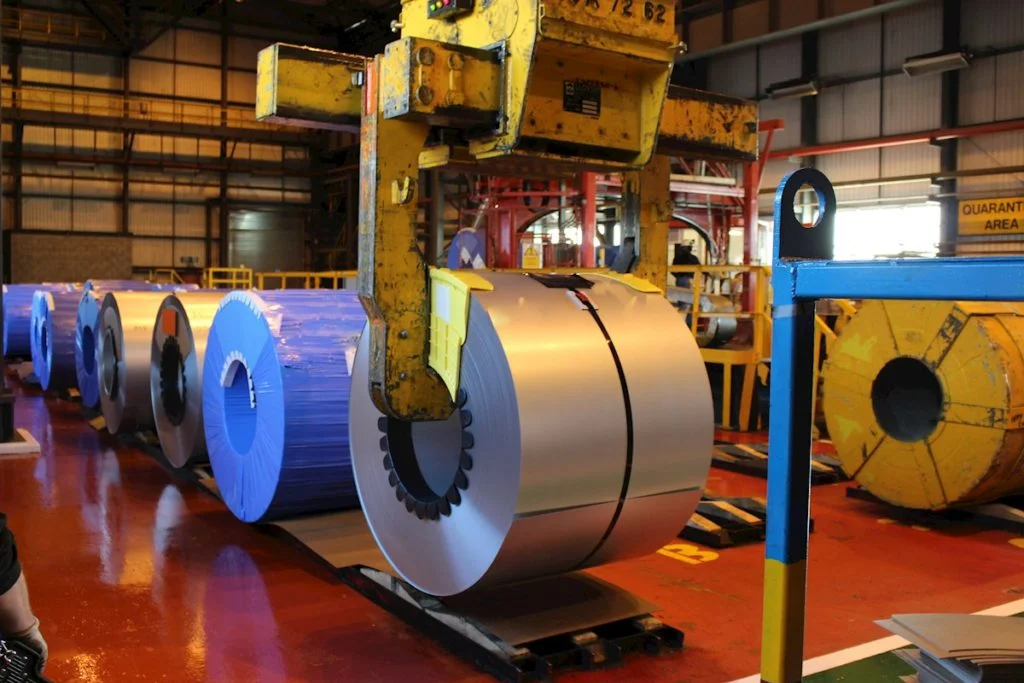
coilshield® is an innovative new reusable product from Pulse Plastics that has been designed to protect steel coils from damage to the bore, face, and top edge during internal movements, external transportation, or lifting.
coilshield® is a unique, patented two-piece product that offers manufacturers and any users of metal coils superior protection during internal and external movement.
The return on investment is a significant benefit, especially to users of high-value coils such as stainless steel, tin plate, electrical steels, and galvanised and colour-coated coils.
It is also suitable for other industries such as paper, film and plastics.
Key Features:
- Specifically designed
- Patent-protected
- Protects coil bore, edges and faces
- Application:
- Internal movement
- Post delivery
- External movement
- Delivery to the end user
- Designed around bore sizes:
- 610
- 508
- 406
- Adaptable for other sizes & bores
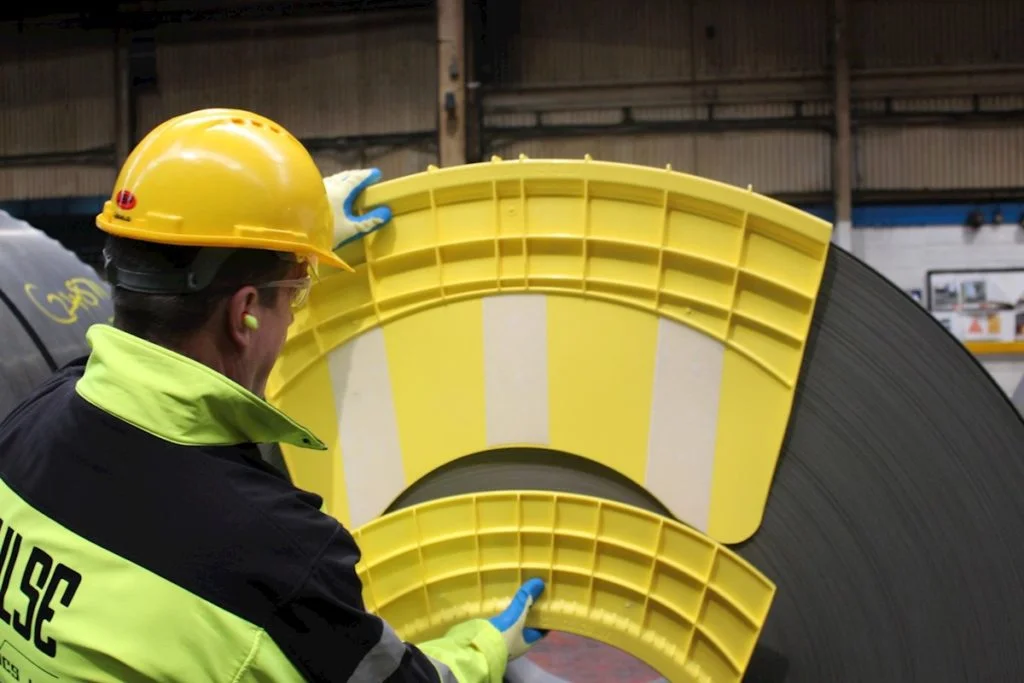
It is a simple, two-piece, self-locking, lightweight product that only takes seconds to fit or remove. It is designed to stay on a naked or packed coil without any fixings, strapping, or magnets.
It is manufactured from a specifically developed robust co-polymer polypropylene that can be fully recycled. It is fully reusable and expected to withstand many coil movements.
Contact us today to see how coilshield® can help revolutionise your steel coil transportation process.
Tips for Securing Steel Coils during Transportation
Proper securing of steel coils is essential to prevent damage during transportation. Here are some tips for securing steel coils:
- Use proper tie-downs: Straps or chains should be used to secure the coils to the trailer or container. The tie-downs should have sufficient strength and load capacity to hold the weight of the coils.
- Pad sharp edges: Sharp edges on the coils can damage the tie-downs or other coils during transit. Padding should be used to protect both the coils and the securing devices from damage.
- Use edge protectors: Edge protectors can be placed between the coils and the tie-downs to prevent abrasion or cutting. They provide an additional layer of protection and help distribute the load evenly.
- Check tension regularly: During transit, the tension of the tie-downs should be checked regularly to ensure that the coils are still properly secured. Any loose or damaged tie-downs should be replaced or repaired immediately.
- Follow load limits: Following the load limits specified by the manufacturer or regulatory authorities is essential. Overloading can structurally damage the trailer or container and increase the risk of accidents.
By following these tips, companies can ensure that steel coils are adequately secured during transportation, preventing damage and ensuring safety.
Conclusion and Future Trends in Efficient Loading of Steel Coils
Efficient loading of steel coils is crucial for transportation as it directly impacts cost-effectiveness, timely delivery, and the quality of the coils. Companies can plan and execute the loading process more efficiently by considering weight, size, and shape factors.
Efficient loading offers several benefits, including reduced transportation costs, improved safety, and better quality control. Following safety measures and best practices ensures loading and unloading are done safely and efficiently.
In the future, we can expect advancements in automation and technology for the efficient loading of steel coils. Automated systems can help streamline the loading process, reducing human error and improving efficiency. Technology such as sensors and tracking devices can provide real-time information on the condition and location of the coils during transit.
In conclusion, efficient loading of steel coils is essential for transportation companies to ensure cost-effectiveness, timely delivery, and quality control. Companies can improve their operations and provide better customer service by prioritising efficient loading and following best practices. Companies must invest in the right equipment and stay updated with the latest trends in efficient loading to stay competitive in the industry.
FAQs
What are steel coils?
Steel coils are large rolls of flat-rolled steel used in various automotive, construction, and manufacturing industries.
What is the process of loading steel coils?
The process of loading steel coils involves using specialised equipment such as cranes, forklifts, and coil hooks to lift and transport the coils onto trucks or shipping containers.
What are the safety precautions that need to be taken while loading steel coils?
Safety precautions while loading steel coils include wearing appropriate personal protective equipment, ensuring the equipment is in good condition, and following proper lifting and loading procedures.
What are the different types of steel coils?
Different steel coils include hot-rolled, cold-rolled, galvanised, and stainless steel coils.
What factors determine the loading capacity of a truck or shipping container for steel coils?
The factors determining the loading capacity of a truck or shipping container for steel coils include the coils’ weight and size, the type of equipment used for loading, and the regulations and guidelines set by the transportation authorities.
What solutions are there for steel coil protection?
Pulse Plastics is a market leader in steel coil protection solutions, which are perfect for transporting steel coils. Browse our range of packaging solutions or contact the Pulse Plastics team, who can assist you.
